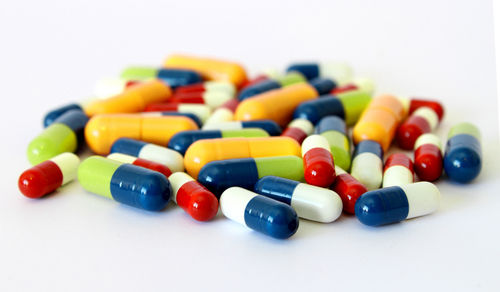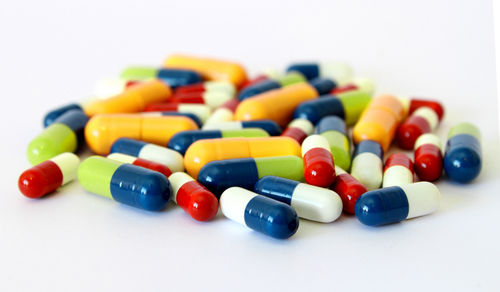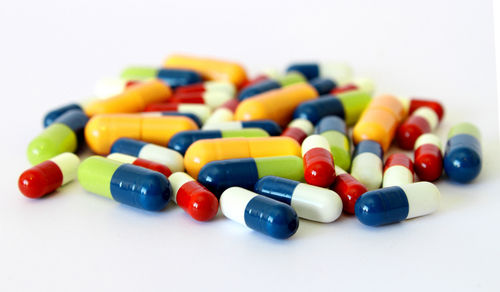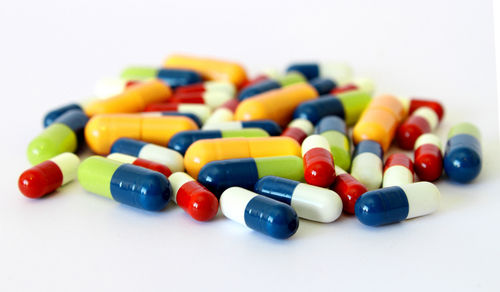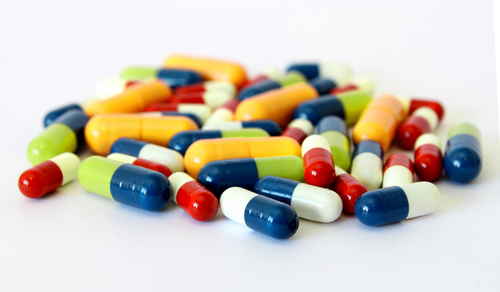
Lycopene, Methylcobalamin, Carotenoids & Multivitamin Capsule
74 INR/Box
Product Details:
- Purity 99%
- Formulations Type General Drugs
- Formulations Form Capsules
- Gender/Age Group Adult
- Storage Instructions Dry Place
- Click to view more
X
Lycopene, Methylcobalamin, Carotenoids & Multivitamin Capsule Price And Quantity
- 74 INR/Box
- 300 Box
Lycopene, Methylcobalamin, Carotenoids & Multivitamin Capsule Product Specifications
- 99%
- Capsules
- Adult
- General Drugs
- Dry Place
Lycopene, Methylcobalamin, Carotenoids & Multivitamin Capsule Trade Information
- Cash in Advance (CID) Cash Advance (CA)
- 300 Box Per Month
- 1 Months
- Yes
- Sample costs shipping and taxes has to be paid by the buyer
- Western Europe Australia North America Eastern Europe Middle East Central America South America Asia Africa
- All India
Product Description
This combination consists of Lycopene with multivitamins and multiminerals. This combination is a booster dose of antioxidants.Free radicals steal electrons from the proteins in your body, which badly damages your DNA and other cell structures. They can create a "snowballing effect" as molecules steal from one another, each one becomes a new free radical, leaving a trail of biological carnage. Free radicals tend to collect in cell membranes (lipid peroxidation), which makes the cell lipids prone to oxidative damage. When this happens, the cell membrane becomes brittle and leaky, causing the cell to eventually fall apart and die. Free radicals can severely affect your DNA by disrupting the duplication of DNA, interfering with DNA maintenance and breaking open or altering its structure by reacting with the DNA bases. Free radicals are linked to over many diseases, including cardiovascular diseases, cataracts, rheumatoid arthritis, osteoarthritis, diabetes, anemia, neurodegenerative diseases and aids in digestion. If your body does not get adequate protection, free radicals can become rampant, causing your cells to perform poorly. This can lead to tissue degradation and put you at risk of diseases.
This is where this antioxidant combination comes in. This can break the free radical chain reaction by sacrificing their own electrons to feed free radicals, but without turning into free radicals themselves.
This combination also helps slow down the aging process, which can have immense effects on your skin health.
Indications:
Energy production
Management of healthy skin, hair and nails
Effective in cardiovascular diseases
Pernicious anemia
Strengthens the immune system
Regulates blood pressure
Production of red blood cells
Regulates carbohydrate metabolism
For rheumatoid arthritis and osteoarthritis
Effective in neurodegenerative diseases
Age- related macular disease (eye disease)
Useful in diabetes
Useful in Hepatitis C
Effective in pregnancy
For digestion
Useful in aging
About Composition:
Lycopene 6%:
Lycopene is a fat-soluble red pigment produced by plants and some microorganisms. It represents the major carotenoid in tomatoes and is found to a lesser extent in guava, pink grapefruit, watermelon and papaya. In contrast to other carotenoids, this lipophilic acyclic isomer of -carotene lacks vitamin A activity and, although it represents the most predominant carotenoid in human plasma that is enriched in (very-) low-density lipoprotein fractions. Lycopene is especially interesting because of its considerable antioxidant activity that highly exceeds that of -carotene and tocopherol. It possesses an impressive spectrum of health beneficial properties, ranging from hypocholesterolemic and cardio-protective effects to anti-inflammatory and anti-mutagenic activity and a remarkable anti-cancer potential. Besides this, a high lycopene serum level might be linked to a lower risk for age-related macular degeneration.
Vitamin C:
Vitamin C is a water-soluble vitamin that is necessary for normal growth and development. It is one of many antioxidants. Antioxidants are nutrients that block damage caused by free radicals. Vitamin C is needed for the growth and repair of tissues in all parts of your body. It is used to:
Form an important protein used to make skin, tendons, ligaments, and blood vessels
Heal wounds and form scar tissue
Repair and maintain cartilage, bones, and teeth
The buildup of free radicals over time is largely responsible for the aging process
Useful in aging process, heart disease, and conditions like arthritis
Vitamin E Acetate:
Tocopheryl acetate is a form of vitamin E, a natural skin-conditioning agent and antioxidant. It is the ester of acetic acid and tocopherol and is often used as an alternative to pure tocopherol (or undiluted vitamin E) because it is considered more stable and less acidic.
Tocopheryl acetate is a fat-soluble vitamin that can be isolated from vegetable oils. It is also found in dairy products, meat, eggs, cereals, nuts, and leafy green and yellow vegetables. Its substantiated benefits include enhancing the efficacy of active sunscreen ingredients, reducing the formation of free radicals from exposure to UV rays, promoting the healing process, strengthening the skin's barrier function, protecting the skin barrier's lipid balance, and reducing transepidermal water loss. Attributed with antioxidant, anti-aging, moisturizing, anti-inflammatory, and enhanced SPF properties, tocopherol acetate is valued both as a dietary supplement and skincare active.
Vitamin B6:
Vitamin B6 is a water-soluble vitamin. Water-soluble vitamins dissolve in water. The body cannot store them. Leftover amounts of the vitamin leave the body through the urine. That means you need a continuous supply of such vitamins in your diet. Vitamin B6 helps the body to make antibodies that are needed to fight many diseases, maintains normal nerve function, and makes hemoglobin that carries oxygen in the red blood cells to the tissues. A vitamin B6 deficiency can cause a form of anemia. It also breaks down proteins. The more protein you eat, the more vitamin B6 you need. It also keeps blood sugar (glucose) in normal ranges.
Carotenoids:
Carotenoids are a class of more than 600 naturally occurring pigments synthesized by plants, algae, and photosynthetic bacteria. These richly colored molecules are the sources of the yellow, orange, and red colors of many plants. The most common carotenoids in North American diets are -carotene, -carotene, -cryptoxanthin, lutein, zeaxanthin, and lycopene. -Carotene, -carotene, and -cryptoxanthin are provitamin A carotenoids, meaning they can be converted by the body to retinol (vitamin A). Lutein, zeaxanthin, and lycopene have no vitamin A activity. The one of the essential functions of carotenoids recognized in humans is that of provitamin A carotenoids (-carotene, -carotene and -cryptoxanthin) to serve as a source of vitamin A. Vitamin A is essential for normal growth and development, immune system function, and vision. In plants, carotenoids have the important antioxidant function of quenching (deactivating) singlet oxygen. Test tube studies indicate that lycopene is one of the most effective quenchers of singlet oxygen among carotenoids.
Methylcobalamin:
Methylcobalamin circulates through the bloodstream and is one of two naturally-occurring coenzyme forms of vitamin B12 that the body utilizes. The body needs B12 to convert homocysteine to methionine, protect DNA and RNA, support energy, protect nerve and brain cells, stimulate serotonin production, contribute to red blood cell formation, support immune function, and maintain a positive mood. This B12 form has a higher stability and bioavailability and doesn't require conversion.
Folic Acid:
Folic acid is a type of B vitamin. It is the man-made (synthetic) form of folate that is found in supplements and added to fortified foods. Folic acid is water-soluble. It works along with vitamin B12 and vitamin C to help the body break down, use, and create new proteins. The vitamin helps form red blood cells and produce DNA, the building block of the human body, which carries genetic information. Folic acid supplements may also be used to treat folic acid deficiency, certain menstrual problems, and leg ulcers.
Selenium:
Selenium is an essential trace mineral.This means your body must get this mineral in the food you eat. Small amounts of selenium are good for your health. It helps the body with making special proteins, called antioxidant enzymes, which play a role in preventing cell damage and helping your body protect you after a vaccination.
Chromium:
Chromium is an essential mineral that is not made by the body and must be obtained from the diet. It is important in the metabolism of fats and carbohydrates. Chromium stimulates fatty acid and cholesterol synthesis, which are important for brain function and other body processes. It is also important in the breakdown (metabolism) of insulin.
Mechanism of Action:
Lycopene is responsible for its remarkable chemopreventive and anti-proliferative activity. Its antioxidant effects include a considerable reactive oxygen species (ROS) scavenging activity, which allows lycopene to prevent lipid peroxidation and DNA damage. Simultaneously, lycopene induces enzymes of the cellular antioxidant defense systems by activating the antioxidant response element transcription system. As another chemopreventive strategy, lycopene increases gap junctional communication (GJC), which is suppressed during carcinogenesis.

Pharmacokinetics:
Absorption: Processing of tomatoes increases the lycopene content because of the concentration operations and more importantly it makes it more bioavailable. Because lycopene is so insoluble in water and is so tightly bound to vegetable fiber, the bioavailablity of lycopene is increased by processing. For example cooking and crushing tomatoes.
After ingestion, lycopene is incorporated into lipid micelles in the small intestine. These micelles are formed from dietary fats and bile acids, and help to solubilize the hydrophobic lycopene and allow it to permeate the intestinal mucosal cells by a passive transport mechanism.
Distribution: In blood plasma, lycopene is eventually distributed into the very low and low density lipoproteins fractions. Lycopene is mainly distributed to fatty tissues and organs such as the adrenal glands, liver, prostate and testes.
Metabolism: Little is known about the liver metabolism of lycopene, but like other carotenoids, lycopene is incorporated into chylomicrons and released into the lymphatic system.
Excretion: Lycopene metabolites are excreted via urine.
Side Effects:
There are no reported side-effects of all ingredients in this combination, if taken under recommended dose.
Precautions:
Before taking this combination:
Tell your doctor and pharmacist if you are allergic to any of its ingredients.
Tell your doctor if you have or have ever had blood clotting/bleeding disorders, kidney problems, liver problems, high blood fats (cholesterol/triglycerides), recent or planned surgery.
Tell your doctor if you are pregnant, plan to become pregnant, or are breast-feeding.
Storage:
Store in cool and dry place.
Protect from direct sunlight.
Tell us about your requirement

Price:
Quantity
Select Unit
- 50
- 100
- 200
- 250
- 500
- 1000+
Additional detail
Mobile number
Email


